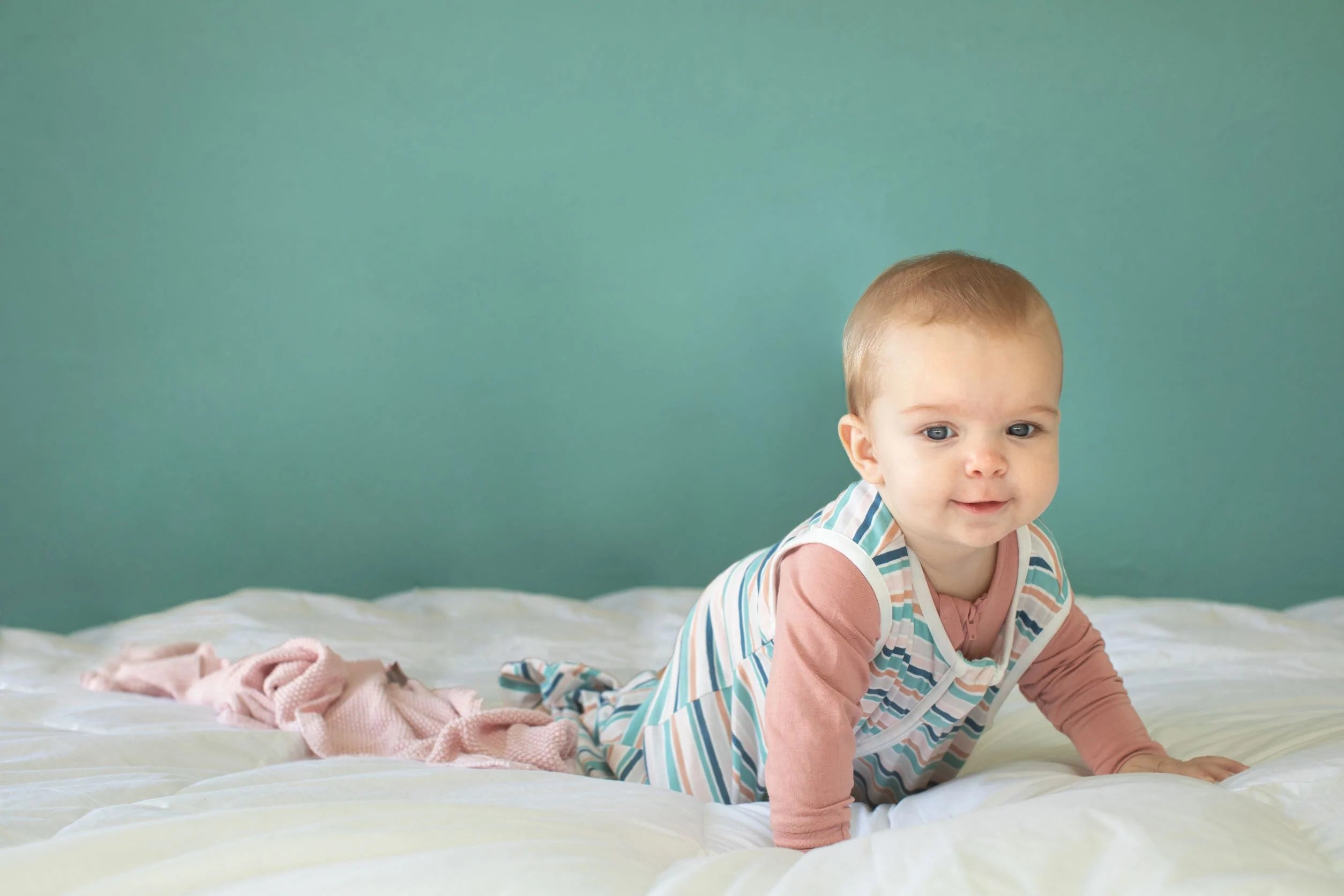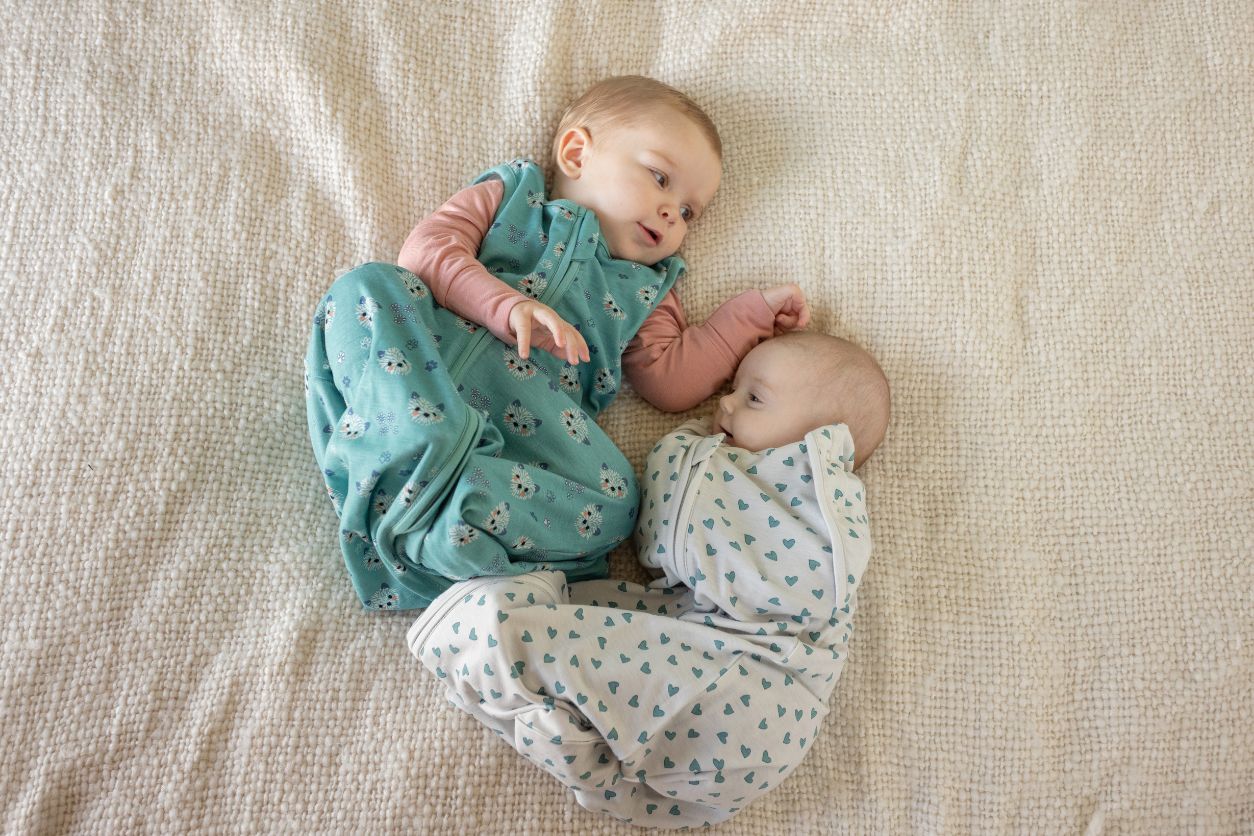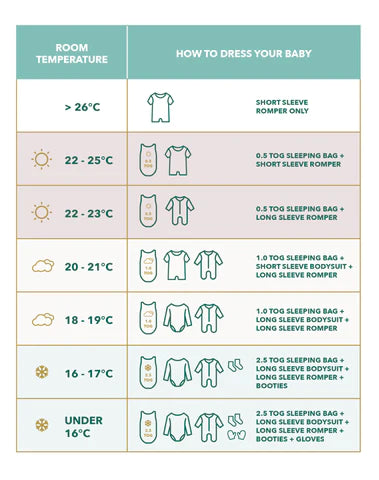Baby Sleeping Bags and Swaddles
As a new parent, there is a lot you have to master. From milk and water temperature, feeding and bedtime routines, and figuring out what your baby likes. Choosing between a swaddle and a baby sleeping bag is another decision to add to the list.
Which one do you start with? Can you only choose one, and when exactly do you stop swaddling the baby? Read on to learn the difference between baby sleeping bags and swaddles, plus what you need to consider when choosing between the two.
What is a Swaddle?
Swaddles, or swaddle blankets are square or triangular wraps used to wrap your baby up in a burrito-like form. The wrap helps your baby feel safe and secure because it mimics their restricted movement and warmth inside the womb. That feeling of being held snugly soothes the baby and helps them to remain calm, so they cry less often and sleep more.
Another reason for swaddling a baby is to minimize the startle reflex. Babies experience sudden jerking movements triggered by anything from a door opening to a parent laughing and even their own dreams. When the baby startles, it wakes them up, and they start crying. Wrapping them in a swaddle restricts the startle reflexes so the baby can sleep longer.
Is Swaddling Safe?
Despite swaddling being an ancient practice that has been used for generations, recent research shows that it might increase the risk of developing hip dysplasia if not done correctly. To allow healthy hip development, legs should easily bend up and out at the hips. The baby's legs should therefore not be tightly wrapped or pressed together.
Other safety concerns include the risk of overheating, if too many layers are used, which increase the risk of SIDS. Swaddling should be stopped as soon as your baby shows signs that it is attempting to roll.
Even without the dangers though, most infants start kicking off the wrap at a very early age, which means you have to keep wrapping them over and over.
For these reasons, midwives and paediatricians recommend using baby sleeping bags from day one instead.
Baby Sleeping Bags
Contrary to popular belief, you can skip the whole swaddling process and go straight to sleeping bags from day one. Today, baby sleeping bags are available from age 0 to around 24 months. They still provide that cozy, wrapped-up feeling without, or reducing the need, for additional blankets in the cot.
So, what does a baby sleeping bag look like?
As the name suggests, a baby sleeping bag is a wearable bag-like blanket where you zip your baby up for all-night snuggly goodness. These bags have a two-way zipper, and are made of stretchy, breathable natural material like organic cotton or bamboo. Sleeping bags are designed to allow and withstand the reflexes and kicks without dislodging like a wrap and securely fastens around the neckline to keep the baby's head from going inside the bag.
Sleeping Bag Sizing
Here are Bamboo Grove Co, we have two sizes of baby sleeping bags;
- One is 65 cm for infants between 0-6 months, and arms can be swaddled in or out depending on the child's age. This infant sleeping bag has snaps at the arm openings, so it can be used as an arms-in swaddle or an arms-out sleeping bag.
- The other is a regular 6-24 months sleeping bag designed to keep arms out of the bag.
Sleeping Bag TOG Ratings
They come in two thickness ranges; 0.5 TOG for summer and 1 TOG for spring and autumn. And because babies have trouble with regulating their body temperature, these sleeping bags are made of breathable, soft natural fabrics (a blend of viscose made from bamboo and organic cotton) to keep your little one at an even temperature all night long.
Bamboo Grove Co sleeping bags are luxuriously soft, functional, and very user-friendly with arm snaps and a two-way zipper to make night time nappy changes easier.
Why Babies and Parents Love Sleeping Bags
- Baby sleeping bags give the same feeling of closeness and comfort babies get in the womb, without restricting their leg and chest movements too much.
- They transition from arms-in swaddles to arms-out sleeping bags, so you don't have to buy two.
- They have a wider bottom to allow healthy hip and joint movement and development.
- Sleeping bags are TOG-rated for warmth, to reduce the need for other blankets in the cot. You will also know how many clothes to put on the baby.
- The zipper allows for easy nappy change without necessarily waking the baby or unswaddling them.
- Sleeping bags are made of soft, breathable organic materials and they are non-toxic, hypoallergenic and environmental-friendly.
- You don't have to swaddle the baby every few minutes because they can't wriggle out of the sleeping bag.
- There will be no transition from swaddle wrap to sleeping bag, so you won't experience any form of resistance due to a change in sleep associations.
- Sleeping bags reduce the risk of SIDS significantly as long as you also follow the Red Nose safe sleeping recommendations.
When Do Babies Outgrow Sleeping Bags?
While it's clear that you can use a baby sleeping bag from day one, its end differs from child to child.
Once the baby can roll, the swaddle bag should be used with arms out, to ensure that the baby can get back into a safe position should it roll over.
Some babies will enjoy the warmth and comfort of a sleeping bag until they are toddlers, while others will feel frustrated by the lack of mobility and will start resisting it.
Ensure that your baby can move around safely when it wakes up in the morning and stop using a sleeping bag once it impedes their movements.
Since Red Nose doesn’t recommend adding a blanket to your baby’s cot, start dressing the baby in warmer clothes when they get out of the sleeping bag.











Leave a comment